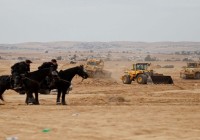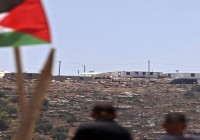The Publication of The Palestinian Economy: Siege of Factors of Production Book by Dr. Shtayyeh
Translated by Sabrin Qadah
Ramallah - The book "The Palestinian Economy: Siege of the Factors of Production" was issued today in Ramallah by Dr. Mohammad Shatyyeh from the Palestinian Economic Council for Development and Reconstruction (PECDAR).
The book sheds light on a series of urgent issues related to the Palestinian economy and provides abstracts to benefit the reader and draw a road map for the decision makers to benefit from the work in dealing with them. These issues include the siege of the agricultural sector, industry and labor market, energy sector and foreign trade.
The book begins with a reading and analysis of macroeconomic performance indicators that indicate that the economic conditions in the Palestinian territories are difficult and fluctuating as political and security uncertainties cast a shadow over growth prospects, stressing that continued reliance on grants and foreign aid to pay current expenditures is one of the most significant risks surrounding the potential inability of the PA to withstand spending pressures.
The book focuses on the agricultural sector, which suffers from Israeli practices and the siege of factors of production, specifically land and water, as well as the weakness of resources and limited budgets and allocations by the government, which led to the aggravation of the crisis and low productivity of the sector and reduced its development, which resulted in the low wages of workers and decline in capacity to absorb employment.
The book also sheds light on the industrial sector, which is no better than the agricultural. Although there are 18,000 industrial establishments, they are mostly for families and do not occupy more than 13% of the workforce, in addition to facing great competition with Israeli and imported goods, or the difficulty of entering the global market because of the occupation control of the entrances and exits of trade.
The book discusses the ten years of division, as well as the siege on the Gaza Strip, which had an impact on the Palestinian economy, which must be addressed immediately so as not to exacerbate the consequences. This is because the division has fragmented the markets and created a disparity in economic indicators and led to uneven development between the West Bank and Gaza.
The author concludes that the lack of control over natural resources, crossings, borders, land, water and the movement of goods and individuals made the Palestinian Authority lack its capabilities and lack power over its territory, which means that the occupation is deepening and reliance is taking entrenching.
The writer explains that the crises experienced by the economic lands are not the product of the wrong economic policies, but the political and security reality and the agreements that tied the Palestinian economy is what put the Palestinian territories in the situation they’re in now.
A number of Palestinian economists participated in the book, which is 270 pages of medium-sized pages, and includes accessories on economic indicators.


